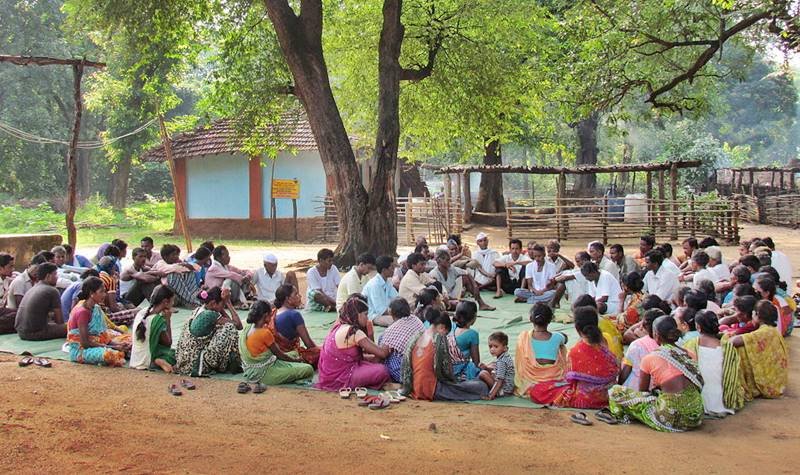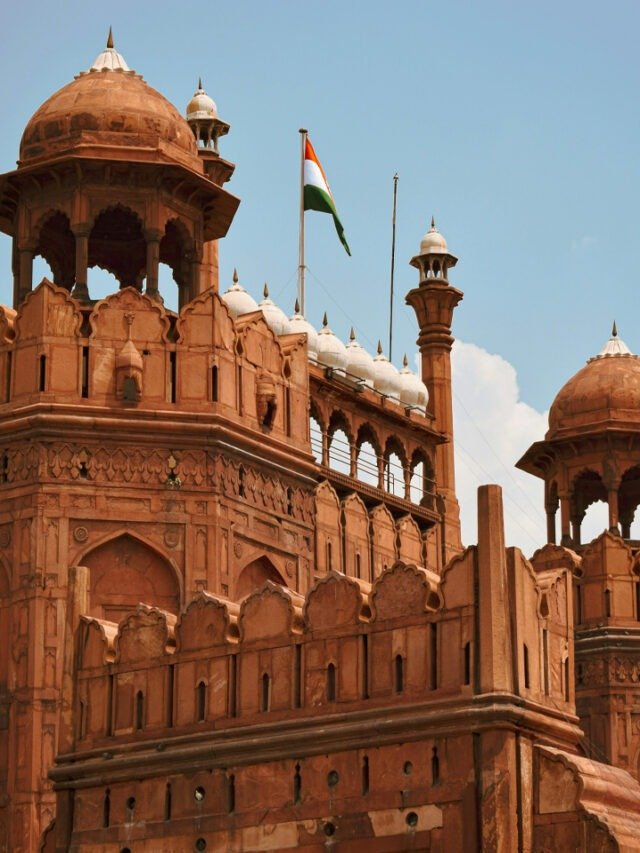By: Dr. Satyavan Saurabh
We see how the vast and grand democracy of India has given strength to the Panchayats and has done the work of decentralization of power. It is the beauty of our democracy that today out of more than two and a half lakh panchayats in the country, almost half of the panchayats are headed by women. The country’s panchayats are getting stronger. The person standing in the last row is also ensuring his participation in power today. He can speak his mind firmly taking decisions. And in all this, women are working shoulder to shoulder to take the country forward. Work is being done to make Panchayats strong, self-reliant, and equipped with modern technologies. In the year 2004, Panchayati Raj was given the status of a separate ministry to make the flow of development in the Panchayati Raj system from the lower level to the upper level. The concept of the formation and strengthening of the Panchayati Raj in India is based on the philosophy of Mahatma Gandhi. In the words of Gandhiji- “True democracy does not sit at the center and run the state, but it runs with the cooperation of every person in the village.”
On 24 April 1993, India took an important step towards strengthening its democracy to make it more inclusive and participatory. The government’s notification of the 73rd Constitutional Amendment Act or the Panchayati Raj Act (later the 74th Act for urban local bodies), introduced a third category in the federal system of the country, thus ushering in a new era of decentralized governance. Remarkably, the 73rd Constitutional Amendment provided constitutional and legal rights for decentralized governance in the country or for local self-governing institutions.
It was not easy to pass such a revolutionary bill as many senior policymakers were considering it a threat to their very existence. Therefore, it was not surprising when the entire opposition in the Rajya Sabha opposed the 64th Constitutional Amendment Bill brought by the Rajiv Gandhi government in 1989. The bill provided for three-tier Panchayati Raj institutions and those opposing it were members of the opposition as well as members of the ruling Congress who saw it as a threat to their strength and political base. Narasimha Rao, who became Prime Minister after Rajiv Gandhi three years later, had to work hard and hard to get the 73rd Amendment Bill passed in 1992, even creating the Member of Parliament Local Area Development Scheme fund. Although this act was significantly diluted in many respects from the original bill, still it contained many such basic provisions, due to which it was termed as a picture-changing law that establishes a truly participatory democracy in the country.
The 73rd Amendment to the Constitution, which gave constitutional status to Panchayats and recognized them as self-governing institutions, has now made deep inroads into the democratic psyche of the country. One of its hallmarks is their number. Today, the number of elected representatives i.e. MPs and MLAs in the country is only around five thousand, whereas under the Panchayati Raj Act, there are more than three million representatives at various levels (Gram Sabha, Panchayat Samiti, and Zilla Parishad) across the country, which is the world’s largest number of representatives. It is the largest democratic system. The 73rd Amendment has strengthened the roots of democracy and political inclusivity and increased the participation of the most backward and disadvantaged sections of society. More than one million new representatives of these societies have got a place in the democratic process due to the binding reservation applicable for women, scheduled castes and tribes, and other backward classes under the 73rd amendment. It is undeniably the process that brings about the most positive change for women in the field of politics in the country. While the participation of women in Parliament and State Assemblies is only 8 percent, in this area a very large number i.e. about 49 percent of the elected representatives are women. Today the number of women representatives in the country is about 14 lakhs. Of these, 86 thousand are representatives of local bodies.
Apart from the issues of rights and competence, there are many other serious issues for Panchayats, especially in the case of inadequate financial powers, due to which these self-governing institutions have to be at the mercy of the State and Central Governments. While on the one hand the Panchayats have been given the responsibility for many works, on the other hand, their right to levy taxes has been kept very limited. No Panchayat can levy tax on any property. Even the judiciary did not get much help in this matter. In this case, it is necessary to mention a very famous incident of Dabhol where a Gram Sabha tried to impose a tax on Enron Company but it was defeated in court. In this way, the major task of increasing the jurisdiction of Panchayats and clarifying their justification seems to be a daydream.
Panchayats do not have a strong financial base; they have to depend on the state governments for finance. It is to be known that the finance provided by the state governments is only for spending on a particular item. In many states, Panchayat elections are not held on time. In many panchayats where there are women heads, the work is done on the orders of one of their male relatives, women are only nominal heads. This negatively affects the objective of women’s reservation in Panchayats. Regional political organizations interfere in the affairs of the Panchayats, thereby influencing their actions and decisions. In this system, it is sometimes difficult to make harmony between the elected members of the Panchayats and the officials appointed by the State, which affects the development of the Panchayats.
Last but the most important thing is that so far very little effort has been made to bring Panchayats under the ambit of e-governance. There is no doubt that accountability, transparency, and efficiency can be increased by leveraging new-age technology (ICT). Despite this, even half of the 2.5 lakh panchayats in the country are not under the purview of the e-panchayat project. It should be noted here that the ICT campaign for Panchayats was started in 2004.
In the end, it would be right to say that despite achievements like the empowerment of women and other backward and marginalized societies, the process of decentralization is very slow, sluggish, and unsatisfactory. While granting constitutional status to these institutions was an important step in the direction of mainstreaming the marginalized society in this diverse country for many years, now in this regard, there has been a concerted effort by the political rulers of the Center and the state. Transformative and concrete steps need to be taken. It can be expected that in the coming time, Panchayats will emerge as a small republic of the country. Panchayati Raj institutions should be given some broad powers to levy taxes. Panchayati Raj institutions themselves should increase their financial resources. Apart from this, the 14th Finance Commission has increased the finance allocation of Panchayats. More steps are needed in this direction.
More executive powers should be given to Panchayati Raj Institutions and along with budget allocation; a reliable audit should also be done from time to time. The launch of the e-Gram Swaraj Portal by the government is a commendable effort in this direction. Women should be empowered more and more mentally and socially so that they can become self-reliant in decision-making matters. The elections to the Panchayats should be held at the appointed time on the norms of the State Election Commission without interference from the regional organizations. Rankings should be allotted to the panchayats based on their performance and the top-ranked panchayat in this ranking should be rewarded.
(The author is a poet, independent journalist, and a columnist)












